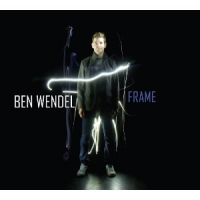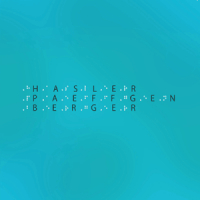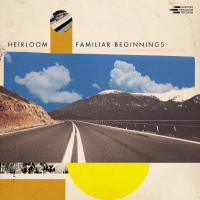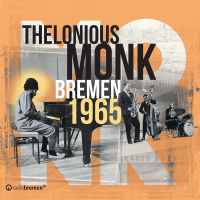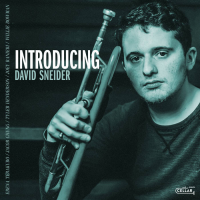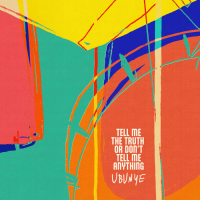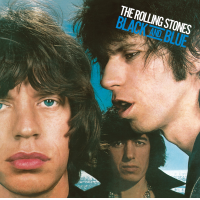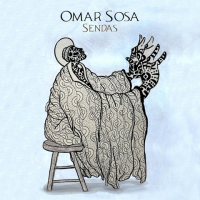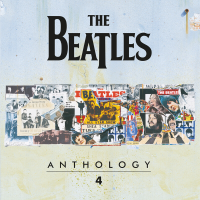Home » Jazz Articles » Multiple Reviews » Allan Holdsworth: Hard Hat Area and None Too Soon
Allan Holdsworth: Hard Hat Area and None Too Soon
But despite all the guitarists who`ve cited Holdsworth as a touchstone, ranging from Alex Machacek and Scott Henderson to Eddie Van Halen, this legendary British guitarist who's lived in the US for decades has become increasingly hobbled when it comes to releasing new albums. His last studio recording, Flat Tire: Movie for a Non-Existent Movie (Megazoidal, 2001), was a solo guitar/SynthAxe recording and the last time he recorded with a group in a studio was The Sixteen Men of Tain (Globe, 2001). Since then there have been live recordings like Then! (Alternity, 2004) and the more recent Blues for Tony (MoonJune, 2009); anthologies like Against the Clock (Alternity, 2005); and aborted projects like Soft Works' Abracadabra (MoonJune, 2003), which would morph, after Holdsworth left, to Soft Machine Legacy. But the Holdsworth camp has been frustratingly quiet in the past few years. He has been hitting the road far more often, delivering a knock-out 2009 performance in Gatineau, Canada, but as strong as his shows are, they only shine an even greater spotlight on the lack of new material and a new album to push.
The bad news? The album that's been rumored for more than five years still remains MIA. The good news? With so many of Holdsworth's recordings out of print, MoonJune Records has brought two of them back, and label head Leonardo Pavkovic couldn't have picked two better ones. One, 1993's Hard Hat Area, the follow-up to Holdsworth's impressive Wardencyffe Tower, in addition to a new set of Holdsworth compositions, focuses on a consistent group as opposed to Wardenclyffe's varying lineups; the other, 1996's None Too Soon, lays any questions about the guitarist's jazz credentials to rest on an album that, like his more decidedly fusion collaboration with guitarist Frank Gambale, Truth In Shredding (Legato, 1990), focuses largely on a set of jazz standards. Together, these two remastered reissues are hopefully paving the way for that long-awaited new studio recording, and in the meantime are certainly well worth revisiting.
 Allan Holdsworth
Allan HoldsworthHard Hat Area
MoonJune Records
2012 (1993)
Bringing drummer Gary Husband and keyboardist Steve Hunter back from Wardenclyffe Tower, Hard Hat Area's biggest wildcard is Skuli Sverrisson, an Icelandic bassist who has since gone into considerably different territory as musical director for avant-popster Laurie Anderson and bassist on vocalist Theo Bleckmann's Hello Earth! The Music of Kate Bush (Winter&Winter, 2011), not to mention his own discography, which includes his lovely Sería chamber ensemble, responsible for two albums to date and which delivered a sublime performance at the 2010 Punkt Festival in Norway. Here, however, at the age of 27, Sverrisson's first recorded encounter with Holdsworth (and one of his first North American recordings, period) demonstrates remarkable flexibility, playing with lithe grace, even at the frenetic tempo of "Ruhkakah," which hits with a bang after Holdsworth's rubato, album-opening tone poem, "Prelude." His solo on the simmering ballad "Love Levels, High Stakes," demonstrates an ability to navigate Holdsworth's distinctive approach to harmony and change previously only successfully handled by Jimmy Johnson and Jeff Berlin.
Husband plays with his characteristic blend of precision and reckless abandon. Holdsworth has worked with a number of drummers over the years, and they're all fine players—in particular, Chad Wackerman—but there's a special chemistry shared with Husband, a certain kind of unbridled energy that pushes the ever-perfectionist Holdsworth to take more risks. By the time of Hard Had Area, Holdsworth's tone was already losing some of its grit and bite; always looking to emulate the attack-less, vocal-like timbre of the saxophone (and citing John Coltrane as a seminal influence), the rock-edged stance of earlier work with Soft Machine on its late-period classic, Bundles (Harvest, 1975)—or even his own early solo recordings, like the EP-length Road Game (Warner Bros., 1983)—was long gone. Instead, while he used overdrive and sustain, and a whammy bar to create plenty of visceral bends, the edge was gone from of his tone. That's not a criticism, however; Holdsworth proves still capable of incendiary energy, in particular on "Ruhkakah" and the somewhat episodic title track, which suffers a tad from dated synth sounds in its opening minutes, but kicks into higher gear once Holdsworth begins soloing halfway through the track; it's just a different kind of energy.
While later recordings—and current touring—have found Holdsworth working largely in a trio context, the addition of a keyboardist has always fleshed out his sound in a good way, especially since the guitarist's own rich voicings often create a lush backdrop that disappears suddenly when he moves to solo. And if recent work with Alan Pasqua—keyboardist and fellow alum of drummer Tony Williams' New Lifetime and Believe It (Columbia, 1975)—has represented a welcome return to a larger sonic palette, it's too easy to forget Hunt. The keyboardist's work on three Hoildsworth recordings—in addition to Hard Hat Area and Wardenclyffe Tower, their 1989 predecessor Secrets (Restless, 1989)—is exemplary. The only shame is that, with Holdsworth playing his unwieldy SynthAxe guitar on a number of tracks, it's sometimes difficult to know whether it's him or Hunt soloing—all the more difficult given Hunt was using some of Holdsworth's synth patches. Curiously, while the original Restless Records CD gave track-by-track info, this MoonJune reissue does not.
But it's a minor quibble. Hard Hat Area remains one of Holdsworth's better solo recordings—overall, certainly one of his most consistently high octane—and this remastered reissue does it justice both sonically and by bringing it back.
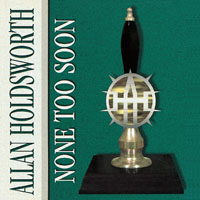 Allan Holdsworth
Allan HoldsworthNone Too Soon
MoonJune Records
2012 (1996)
Three years would pass before Holdsworth's next album, and it was a sign of trouble; prior to that, he'd been releasing albums almost every year between 1982 and 1993, with the exception of a similar gap between Secrets and Wardenclyffe. And with None Too Soon an album largely consisting of standards, many of his fans were taken aback. Sure, Holdsworth was long considered a jazzer, but his own recordings had always focused on original material, largely by the guitarist but with occasional contributions from his band mates.
On the other hand, when you've created your own harmonic language and reshaped the face of your instrument as significantly as Holdsworth has, there will always be accusations of being "not jazz," and while it's unlikely that Holdsworth was concerned about proving himself to anyone but himself, None Too Soon makes clear that he'd spent plenty of time wood-shedding in the tradition as he was coming up. Barring pianist Gordon Beck's two-part title track—its clear roots in the modal explorations of Coltrane encouraging the guitarist to layer his own "sheets of sound"—and fiery swinger "San Marco," the bulk of None Too Soon culls from the repertoires of jazz giants including Coltrane, guitarist Django Reinhardt, saxophonist Joe Henderson and pianist Bill Evans, with one Irving Berlin tune ("How Deep is the Ocean") and an often-covered The Beatles chestnut ("Norwegian Wood") thrown in for good measure.
In addition to reteaming Holdsworth with Beck—having passed away in 2011, a largely unsung British pianist with whom Holdsworth recorded, before his own career as a leader kicked into high gear, on The Things You See (JMS, 1980)—the guitarist teams with a new rhythm section—or, at least, new for him. Bassist Gary Willis and drummer Kirk Covington were, at this point, the powerful engine of Tribal Tech, the California-based fusion group that, with co-leader/guitarist Scott Henderson and keyboardist Scott Kinsey, had emerged as a fusion force in its own right, with seven of its own albums released at that point. With Willis' tone far denser than any Holdsworth had played with before—and with significant roots in fretless bass wunderkind, the late Jaco Pastorius—and with the built-in chemistry he shared with Covington, this group of old and new friends proves capable of handling jazz classics like Henderson's "Inner Urge" and "Inner Urge" with the right prerequisite swing, but there's a kind of restrained power that makes this not exactly a fusion record, but not exactly a straight-ahead one either.
Certainly the space-age synth that swoops into the beginning of None Too Soon's opener, Coltrane's "Countdown," is something less likely to be heard on a straight-ahead record. Still, after an incendiary minute-long duet between Holdsworth and Covington, where Holdsworth creates cascading layers of rapidly shifting sound over the drummer's unfettered and at times thundering pulse, the complexion changes completely. Covington swings with grace, his light ride cymbal driving the pulse alongside Willis' effortlessly walking bass line. Gentle delivery soon leads to greater fire, however, as Holdsworth winds his way through Coltrane's complex changes—still sounding irrefutably like himself, but in a context that few, at that point, might have considered possible.
Reinhardt's gentle "Nuages" is a ballad that's been covered thousands of times, but rarely (if ever) like this. Once again a more synth-heavy intro—Holdsworth's SynthAxe melody soaring over Beck's synth wash—is a teaser for something that is never actually realized. Instead, when Willis and Covington enter—the drummer on brushes, something rarely heard with Tribal Tech—and Beck switches to piano, the arrangement moves closer to the center, though Holdsworth's overdriven and long-sustaining tone keep it away distanced from being completely in the mainstream.
With textures that would give mainstreamers cause to pause, and with a set list of material significantly different to what his fans were accustomed to, None Too Soon was largely met with both critically and popular diappointment. But now, 16 years later—at a time when stylistic cross-pollination is the norm, and the Young Lions resurgence is well over—it's possible to assess None Too Soon with less preconception and less criticism for what it isn't, and celebrate it for what it is: evidence of breadth even greater than his career to date had suggested. Holdsworth's next studio record, Sixteen Men of Tain seems a direct consequence of None Too Soon—a return to original music, to be sure, but with the gone-too-soon Dave Carpenter largely playing acoustic bass, an album whose touchstones in the jazz tradition are as clear as they'd ever be for Holdsworth.
How this will color Holdsworth's next studio record is anybody's guess; with more than a decade behind him, and his live performances almost entirely built on existing material, there's simply no way to anticipate what's to come. But in the meantime, these two reissues come as a welcome reminder of Holdsworth's compositional and interpretive abilities, while making clear that even if he were to never release another album, his place in the history books of both progressive rock and jazz are absolutely assured.
Tracks and Personnel
Hard Hat Area
Tracks: Prelude; Ruhkakah; Low Levels, High Stakes; Hard Hat Area; Tullio; House of Mirrors; Postlude.
Personnel: Allan Holdsworth: guitar, SynthAxe; Steve Hunt: keyboards; Skúli Sverrisson: bass guitar; Gary Husband: drums.
None Too Soon
Tracks: Countdown; Nuages; How Deep is the Ocean; Isotope; None Too Soon Pt. One / Interlude / None Too Soon Pt. Two; Norwegian Wood; Very Early; San Marcos; Inner Urge.
Personnel: Allan Holdsworth: guitar, SynthAxe; Gordon Beck: digital piano, keyboards; Gary Willis: bass guitar; Kirk Covington: drums.
Tags
PREVIOUS / NEXT
Support All About Jazz
 All About Jazz has been a pillar of jazz since 1995, championing it as an art form and, more importantly, supporting the musicians who make it. Our enduring commitment has made "AAJ" one of the most culturally important websites of its kind, read by hundreds of thousands of fans, musicians and industry figures every month.
All About Jazz has been a pillar of jazz since 1995, championing it as an art form and, more importantly, supporting the musicians who make it. Our enduring commitment has made "AAJ" one of the most culturally important websites of its kind, read by hundreds of thousands of fans, musicians and industry figures every month.



